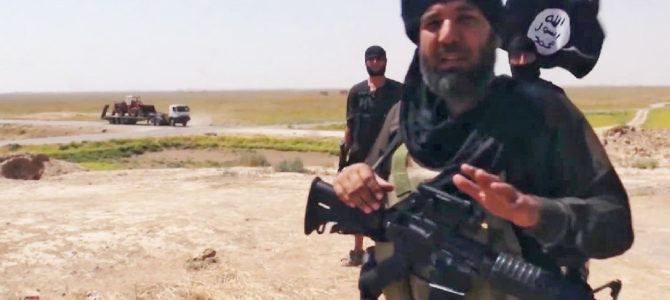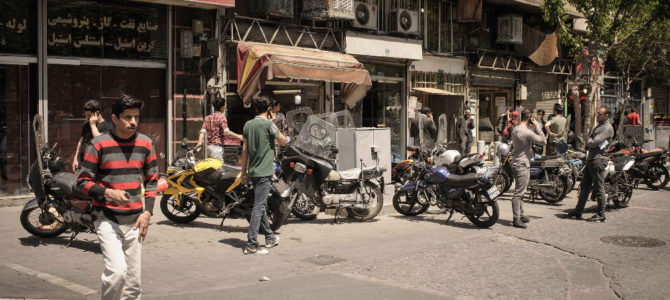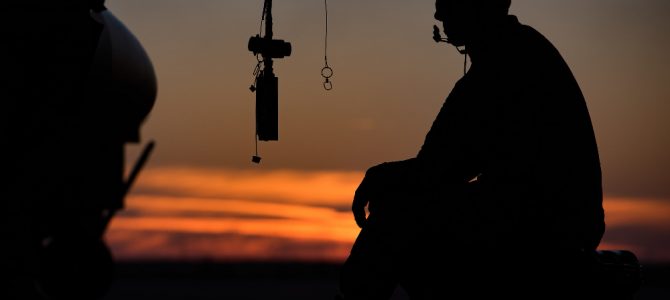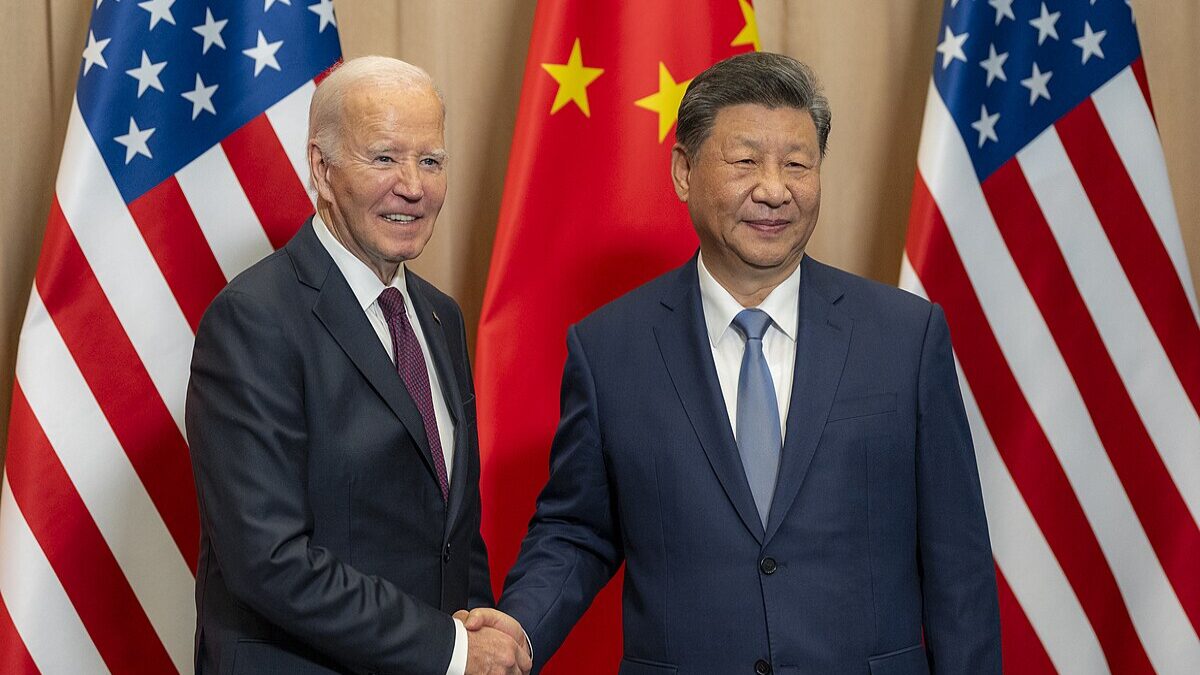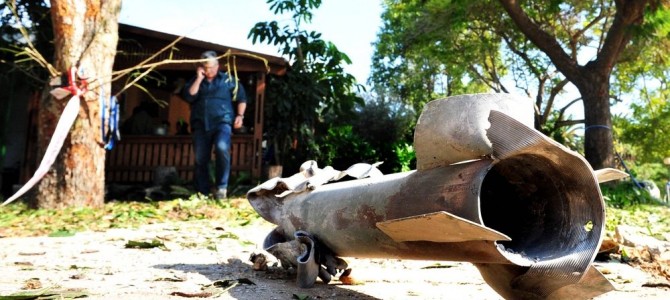
Hamas has a new ally in the Middle East. The ISIS affiliate in the Sinai Peninsula, known as ISIS Sinai Province or simply Sinai Province, is helping Hamas smuggle arms and other supplies into the Gaza Strip from Egypt. This new relationship is one of the many unforeseen consequences of the Arab Spring and the growing instability in the Middle East, bringing a fresh threat to America’s Egyptian and Israeli allies. It’s also more evidence of Iran’s ambition to become a regional hegemon.
Hamas and Sinai Province are coordinating in a number of ways. Hamas is purchasing arms from the ISIS affiliate and giving the group military training (specifically on the use of antitank missiles). Hamas has also provided medical care for ISIS fighters in Gaza. Sinai Province occupies the territory where entrances to the smuggling tunnels to Gaza are located, thus making the ISIS affiliate a necessary strategic ally for Hamas. The two groups have also coordinated on attacks in the north of the Sinai Peninsula near the border with Israel, according to Egyptian officials. Hamas, of course, denies any such relationship.
There’s more to this story than just the convenience of right time, right place. Hamas and ISIS have found their way to one another in the wake of the Arab Spring and a rearranging of allies and allegiances. To understand how we’ve gotten here, we need to sift through the chain reaction sparked by the instability that followed the Arab Spring.
The Arab Spring Rearranged Hamas’ Allies
Prior to the Arab Spring, Hamas looked to Syria as one of its key allies, locating its external headquarters there and receiving aid in the form of funding and weapons. Iran, a Syrian ally, was also a major funder of the Sunni group. But when the Syrian uprising began in 2011, Hamas had to decide whether to side with the regime or the Sunni rebels who allied with Hamas’ own close allies, the Muslim Brotherhood. Ultimately, Hamas sided with the rebels, declaring its support for the Syrian people and removing its external headquarters to Qatar in 2012. This, in turn, damaged Hamas’ relationship with Iran, which was aiding Syrian President Bashar al Assad, and led to a falling-out between the two.
Meanwhile in Egypt, longtime authoritarian ruler Hosni Mubarak was ousted in a coup in 2011 following 18 days of protests. Mubarak had had a good working relationship with Hamas’ rival Palestinian political group Fatah, but was at odds with Hamas. Once Mubarak fell and the Muslim Brotherhood was elected in 2012, Hamas leaders hoped they would now have friends in high places. Hamas, after all, has its roots in the Islamist Muslim Brotherhood. Mohamed Morsi’s positioning as president could only benefit them, especially when it came to the blockades on their tunnels to Egypt. Or so they thought.
Although the Morsi government was certainly friendly to Hamas and made many overtures of support for them, it did little to materially help the group during its short time in power. In just more than a year, Morsi was ousted by a military coup and replaced by Fatah al-Sisi, who not only doubled down on the Mubarak-era repression of the Muslim Brotherhood, but has since aggressively worked to destroy Gaza’s smuggling tunnels into the Sinai Peninsula. This has left Hamas hard up for supplies and hurt Gaza’s fragile economy.
How ISIS in the Sinai Peninsula Grew Out of the Arab Spring
Another outcome of the Arab Spring was of course the rise of ISIS in Syria and Iraq, and its affiliated arm in the Sinai Peninsula. The Salafi jihadist group Ansar Beit al-Maqdis, based in the Sinai Peninsula, formed in 2011 in the wake of Mubarak’s fall and the subsequent release of extremists from prison. It pledged allegiance to ISIS in November 2014 and is now commonly known as Sinai Province.
Sinai Province has now grown to about 1,000 members, with many coming from Bedouin tribes and former al-Qaeda members. However, they’ve also seen Egyptian recruits who were crestfallen when the military coup ousted Morsi. Having lost their faith that the political process could lead to Islamist rule, they radicalized and joined the jihadist group.
The ISIS affiliate in Sinai has been prolific in its attacks on Egyptian police, military, and civilians. They’ve fired rockets into southern Israel and attacked an Egyptian naval vessel. But perhaps most notably, they claimed responsibility for bringing down an Egyptian airliner in 2015, killing 224 people. Meanwhile, Al-Sisi’s government has been aggressively fighting the group since the military coup in 2013.
Mubarak’s fall, the rise of the Muslim Brotherhood, and the coup that brought a hardline anti-Islamist to power all worked in concert with the instability in Iraq and civil war in Syria to create a perfect storm, putting Hamas and ISIS-Sinai Province in a position to help one another. In addition, the fall of Libya has allowed for more sophisticated weapons to flow into the region.
Hamas and ISIS Both Want to Destroy Israel
Officials say this is a relationship of convenience, pointing out that the two groups have little in common politically or ideologically. But this isn’t entirely true. One important thing they share is that both Hamas and Sinai Province see Israel as their enemy and will look for opportunities to attack it. Hamas’ position toward Israel is well known—their charter includes a call for destroying the Jewish state. But Sinai Province has its eyes on Israel as well.
According to the Jerusalem Post, the group is planning a big attack on southern Israel. A senior Salafist official in the Gaza Strip said Sinai Province is going to be a “pioneer” in confronting Israel, and that an attack is just a matter of time. The Israeli Defense Force confirmed they are expecting such an attack any day.
Although Sinai Province fighters had targeted Israel before pledging allegiance to ISIS, the directive to attack is now coming from ISIS headquarters as well. In recent weeks, ISIS has begun a propaganda push calling for recruits to come to the Sinai Peninsula and join the ISIS affiliate there with the promise of one day “liberating” Jerusalem and destroying Israel. They have put considerable resources into the coordinated release of 14 different videos meant to encourage people from Egypt and Sinai Peninsula to join the self-proclaimed caliphate’s branch in the region. This indicates the extent to which ISIS views this affiliate as strategically important.
The alliance between ISIS and Hamas is a dangerous combination of forces, to be sure. ISIS-Sinai Province will no doubt take advantage of Hamas’ years of experience attacking Israel, as well as their own experience before the fall of Morsi (when the Muslim Brotherhood was pushed out of power, the group switched its focus to the Egyptian state). But now that they have ISIS’ backing, more recruits coming in, and Hamas’ help, they will be better positioned once again to launch attacks into southern Israel. They will likewise surely utilize Hamas’ drone technology. Hamas has already used drones to surveil Egyptian security forces in the northern Sinai Peninsula to secure its smuggling pipeline via ISIS, as well as on the Israeli-Egyptian border.
Hamas’ cooperation with Sinai Province is also a way for Iran to support ISIS in the region. The Islamic Republic recommenced support for Hamas in 2015 and has since given millions of dollars to the group. Despite the sectarian differences between Shiite Iran and Sunni Hamas and ISIS, Iran is willing to help them both because of their joint interests in destroying Israel and destabilizing the Egyptian state. It is also another way for Iran to gain hegemony in the region and fight a proxy war against the United States.
This is just one example of the unforeseen effects of instability in the region, and it shows how domino effects can quickly pick up speed there. The consequences that military coups, revolutions, and civil wars bring, which quickly stretch out across borders and sectarian divides, are real. Despite the Obama administration’s fervent desire not to be embroiled in sectarian or regional conflicts in the Middle East, inaction and indecision are making things worse. Whoever is our next president, we should all hope that he or she understands this and is prepared to take action.



